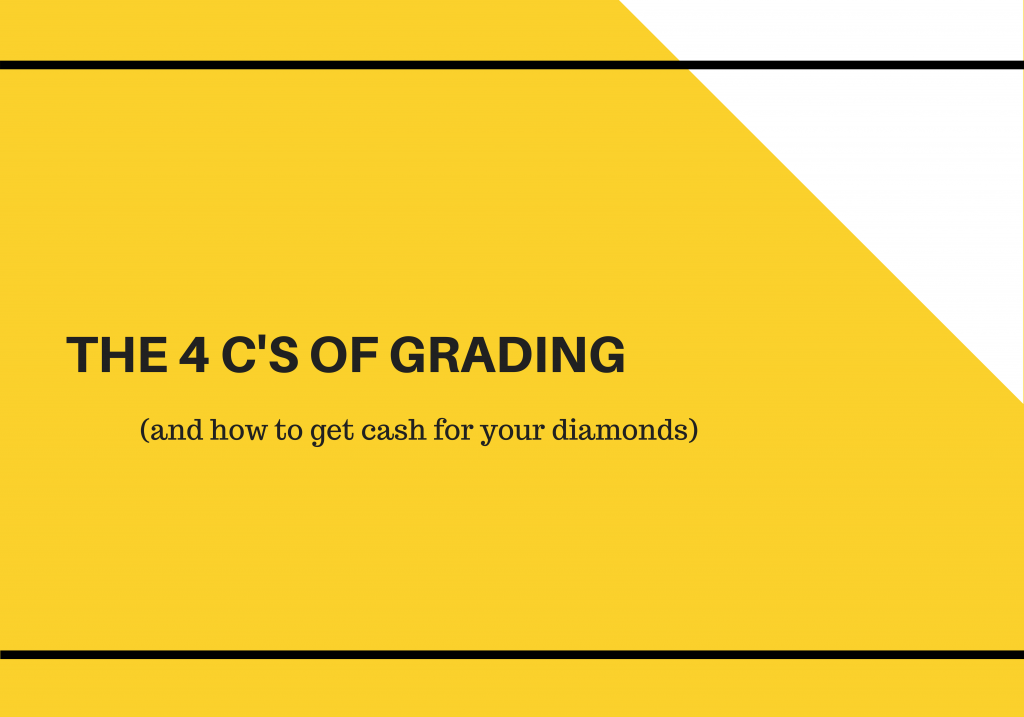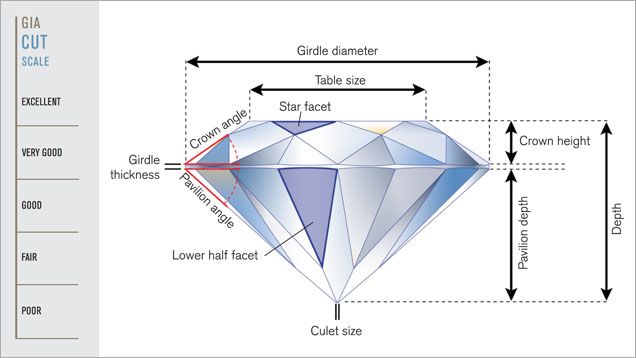
How an appraiser grades your jewelry is incredibly important to know, especially if you want to get cash for your diamonds.
When you understand the blueprint of your diamond (the color, carat, clarity, and cut), you’re better equipped to make sure you’re getting fair value. And you can always use the know-how when you upgrade your ring to something bigger and better.
Pro tip: a larger size diamond doesn’t mean it’s worth more.
But, it can be tricky to grade your diamond without all the proper equipment. How do you know if your diamond is G in color or J? What’s the difference between an SI1 and an SI3? And does it really matter?
In this post, we’ll cover the basics of how your diamond is graded, along with a few tips for grading your diamond at home.
Note this doesn’t mean a buyer won’t also grade your diamond. Rather, you’ll be able to speak the lingo and understand how a diamond buyer reached their resale price.
The Color of Your Diamond
In diamond-speak, color equals lack of color. So, your diamond will be evaluated based on the absence of a color, which is most often yellow. A perfect stone will have no hue, like glass or a drop of water.
Most buyers use the Gemological Institute of America’s (GIA) grading scale, D-to-Z. A D grade is colorless while a Z grade is light yellow. Most people have a diamond that’s between H and K.
At home, you can hold a sheet of white paper next to your diamond. Do you see a yellowish hue? Sometimes the color distinctions are very subtle. You may need a trained eye to determine the grade.

The Weight (or carat size) of Your Diamond
Next up is the weight of your diamond. Pretty straight forward. But a metric “carat” is 200 milligrams, so your kitchen scale won’t work here.
The price of your diamond increases with weight. But, two diamonds of the same size aren’t necessarily worth the same amount.
If you have a loose diamond, the buyer will use a diamond scale. If the diamond is set in a ring, which most are, he or she will use a diamond sizing tool.

The Clarity of Your Diamond
The clarity of your diamond is another test you can (sort of) perform at home. Carbon exposed to heat and pressure in the earth is what creates a natural diamond. And the process can cause internal characteristics called “inclusions” or “blemishes.”
Your diamond will be graded on the amount, size, and position of these inclusions, which affect the appearance of the stone.
The purer the stone, the more value the diamond has. Check out the scale below. Most people have a diamond that’s somewhere in the SI1 to I3 range. This means you can see inclusions with the naked eye or a 10x magnification loupe.

The Cut of Your Diamond
Finally, how your diamond was cut–or as we like to say, its sparkle factor–is also important. Now, this doesn’t refer to whether your diamond is round, square, or cushion. It’s how well the diamond’s facets interact with light; and also the symmetry, proportions, and polish. Of all the 4 C’s, it’s the most complex. You’ll want a trained eye on this one too.

And Finally…
While not technically a C, the shape of your diamond (heart, marquise, round, or oval) also plays a role in the resale price. For example, a round diamond is a classic–kind of like a cup of tea. It won’t ever go out of style. But, a princess cut or oval are sometimes worth up to 30% less. They rotate in and out of the market like blue jean jackets or bell bottom jeans.
Ready to sell your diamond ring? Check out our other post which dives in more to what you can expect when you walk through our door.
